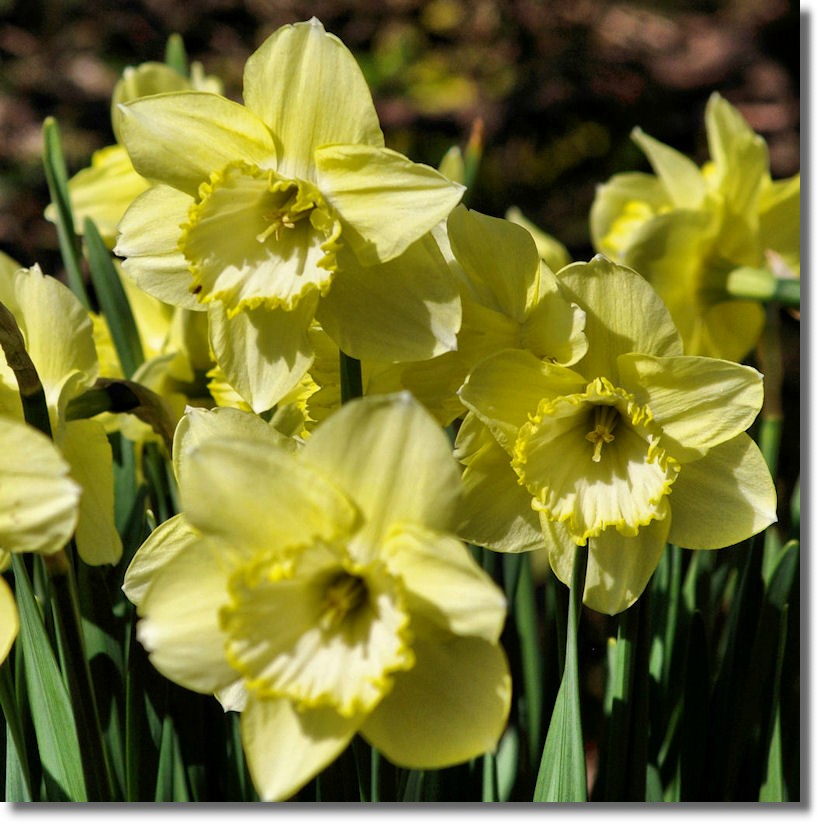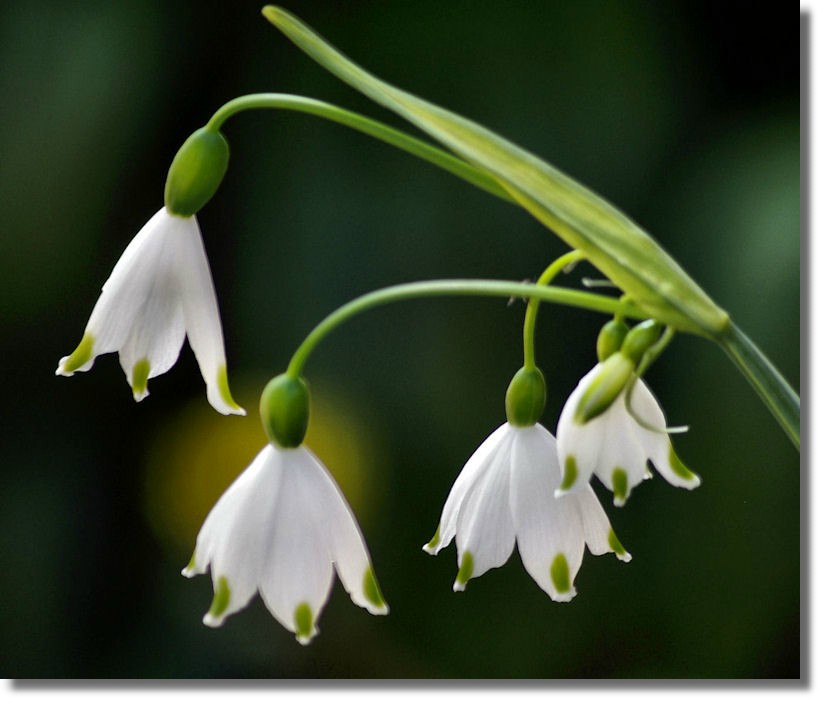Scottie's Monthly Photo Diary
- May 2013
Background
I never go anywhere in Scotland without my camera and I take photographs wherever I go. Sometimes I go somewhere specifically to take photographs with a view to adding another page to the Rampant Scotland site. On other occasions I just see something that makes an attractive picture or else it's another graphic to add to the library to perhaps use on a future occasion. This is a selection of the best photographs I took in May 2013 with a commentary on each one, thus forming a pictorial diary of my travels during the month which can be shared by everyone!
Culzean Castle Country Park
Although the weather in Scotland this spring played its usual tricks of hide and seek, it just makes the infrequent days of sunshine and warmth all the more welcome. Towards the end of April and again in May we were encouraged by a favourable weather forecast to drive from Glasgow down to the Ayrshire coast at Culzean and enjoyed warm (low 70sF) sunny days which not only allowed us to eat lunch outside the visitor centre cafe but also take a good number of photos. In recent years a trip to Culzean in late March has produced a wonderful display of mature magnolias but this year the cold spring and frosts have held them back considerably - some trees looked as though they might not flower at all this year. But by mid May there was an abundance of both pink and white magnolias, the more sheltered wall garden (where this picture was taken) being a particular delight.
The National Trust for Scotland has adapted the former stables at Culzean Castle to form an extensive visitor centre with a great cafe, an extensive information building, a shop and offices for some of the staff who can provide information and support for visitors. All this in addition to the park and gardens and the castle itself contribute to Culzean Country Park being described as the "jewel in the crown" of the organisation.
Culzean Country Park is certainly my favourite National Trust property and regular readers will recall a large article in this diary section on many aspects of the property - see Scottie's Diary - Culzean Castle and Country Park .
There are many large, well established rhododendrons growing in the Culzean estate but in recent years the National Trust has planted a number of modern varieties in the woodland areas. These have larger blooms and a range of lovely colours as well. This mainly white one is an excellent example of this type of rhododendron.
This is another example of the more recent varieties of rhododendron with larger blooms and interesting colours. Of course, some of the bluish cast in this picture may be due to the low light prevailing in the woodland areas
Forsythia is named after William Forsyth (1737-1804) from Old Meldrum, Aberdeenshire, who became Superintendent of the Royal Gardens of St James and Kensington in London. As with a number of spring flowers, the blooms appear on the branches of Forsythia before the arrival of the leaves. William Forsyth is one of a collection of Scottish plant hunters and botanists who are featured in the Scottish Plant Hunters Garden in Pitlochry, Perthshire.
Culzean castle was built more as a stately home than as a defensive castle, so the need for canons and other items of medieval war equipment are not really required, but they still seem to appear on the lawns and entrances at such establishments. This small, "bombard" with decorative fish supporting the barrel is at the entrance gate to Culzean Castle. A bombard is a type of medieval cannon or mortar, used chiefly in sieges. The modern term bombardment derives from this.
The southern end of the island of Arran in the Firth of Clyde is about 15 miles from Culzean Castle. I often try to take a photo of this view but more often than not there is a haze obscuring the silhouette of the island. This one, in the late afternoon on sunny day turned out not too bad after a bit of manipulation in the photographic software - a ship sailing past is even visible in the distance.
Greenbank Garden
Greenbank Garden is not particularly large but it manages to pack in a lot of plants - as they say in Scotland "Guid gear goes in little bulk"! There is an article on visiting Greenbank Garden including its history at Places to Visit - Greenbank Garden.
I've visited the gardens many times over the years, but hadn't realised until now just how many different varieties of daffodils they grow there. Thankfully, many of the flowers have identification labels beside them so that visitors can follow up on any that they particularly like and obtain them from bulb growers. The ones in the graphic above with a slight green tinge in their colour were named "St Patrick's Day".
This variety, which is far removed from the typical daffodil, is named Glowing Phoenix". Daffodil is one of the common names of the genus Narcissus, a mostly spring-flowering, bulbous perennial in the Amaryllis family.
Although this one has the conventional daffodil trumpet, the colour of "Daffodil Chromacolour" has been created with a more unusual shade of orange for the trumpet.
This is another variety of daffodil at Greenbank Garden which has an orange trumpet. I was so busy flitting from flower to flower like a butterfly that I sometimes didn't take a note of their names!
I didn't need to arrange this group of daffodils into a circle - they just appeared that way in the view-finder!
Yet another variety of daffodil, this time one that is totally white.
Another popular spring bulb is the tulip - and it is easy to see why!
Chaenomeles is a spiny shrub, which is native to eastern Asia in Japan, China and Korea. Although related to quince. Chaenomeles are grown ornamentally for their waxy flowers, not for their fruits. It can grow up to nine feet (3 metres) tall.
It is sometimes difficult to tell the difference between apple and cherry blossom but this tree at Greenbank helpfully bore a label which said that it was a variety of Cherry known as "Shirofugen".
Helleborus flowers come in a wide variety of colours but they do have an annoying habit of pointing down to the ground, making them difficult to photograph. This one wasn't too bad but I did have to crouch down to see its face! But I think it was worth the effort.
Leucojum, also known as Summer Snowflake or Loddon Lily have extra green and yellow markings distinguish them from snowdrops and they are also taller.
Finlaystone Country Estate
All the cold weather in April and the late frosts have kept back the flowering season of many plants and I was concerned that the Camellias at Finlaystone might have suffered badly (their daffodils were indeed many weeks behind the normal schedule). But although a number of the blooms had been turned brown by the frost, there were still plenty to photograph in pristine condition.
Although the daffodils at Finlaystone are largely the traditional drifts of golden flowers, like Greenbank they also have some of the more unusual varieties such as these with an almost white colour and petals that curve back from the trumpet.
While the more modern varieties of daffodils developed by plant breeders can provide colour and interest, there is nothing to beat the traditional "host of golden daffodils" as described by the poet William Wordsworth:
I wander'd lonely as a cloud
That floats on high o'er vales and hills,
When all at once I saw a crowd,
A host of golden daffodils,
Beside the lake, beneath the trees,
Fluttering and dancing in the breeze.
Hogganfield Loch and Drumpellier Country Parks
This is the time of year when the next generation of birds start to appear, such as this tiny ball of fluff - a newly hatched Mallard duckling!
I always find it surprising that the mother Mallard is the sole parent to look after the youngsters. Indeed, just after this picture was taken, the female, with much quacking, rushed at an approaching male (who may even have been the dad). He tried to get away but she jumped on his back and pecked at his neck for good measure. He eventually escaped (or mum just decided to go back to look after her family). Despite being good at seeing off any threats, from the time they are hatched, mum Mallard never actually does any feeding of her offspring - just shows them where the best places to feed are located and they have to help themselves!
You'll want to count the number of ducklings in the picture - and yes, there are indeed twelve of them. There was a movie many years ago with the title "Cheaper by the dozen" but I suppose here this should instead be "Cheeper by the dozen"?
Unlike the Mallards, both coot parents are extremely attentive to their chicks and both race back and forwards constantly with more food. Being so young, these chicks were not very impressed by good quality wholemeal bread - but living in a public park in Glasgow, they'll quickly learn that bread is the birdie equivalent of McDonalds fast food.
It's easy to see where the expression "bald as a coot" came from...!
Moorhens are smaller than coots and are far less confident about approaching humans, even when there is food on offer. But this one had built a nest in the same general area as the coot and so was within good range for photography. In fact, there are two Great Crested Grebe nests, a Swan and two Coot nests as well as the Moorhen all within a few hundred yards of one another, so hopefully it's going to be a busy summer for photographing all the young birds once they have hatched.
If you want to read the other Diary entries going back to 2009, there is an Index page.
































